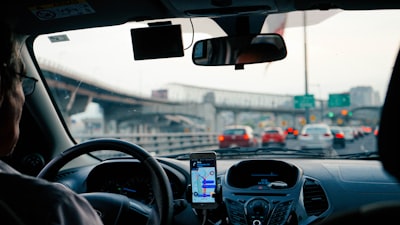There are plenty of sights and sounds on the road to cause you to take your mind off your driving. However, there are as many distracted driving risks within your car, too. It is these distracted driving risks that might cause you to have a wreck because you were not paying attention. You want to avoid that, so consider what you can do to avoid in-car distracted driving hazards.
What is distracted driving? 
Distracted driving occurs when you take your hands, eyes or mind off of the task of driving. Even if you glance away for only an instant, you could have traveled quite a long distance. You might have missed a critical development on the road ahead, and now you have no way to avoid a hazard.
The unfortunate part of this scenario is that if you are the distracted driver, then an accident might be your fault. Therefore, you might have to use your auto liability insurance to pay for the property damage or injuries you cause to others. You could also face penalties including fines, loss of your license or even arrest.
Avoiding In-Car Distracted Driving
Rather than run the risk of distracted driving, it is best to minimize distractions. That way, you have a much lower risk of accidents. Think about some of the distractions present in your car:
The use of a cell phone is one of the leading causes of distracted driving accidents. To help minimize this risk, silence your phone or set it to Do Not Disturb mode. Many smartphones can now sense when you are driving. They will automatically silence for the duration of the trip. Some even send automated messages to callers to let them know that you are driving and will call them back.
You might get distracted if you get caught up by a radio show, music or podcast. Therefore, try to avoid playing loud music or stories that require close attention. Keep the volume at a reasonable level. Only adjust the volume or station when stopped. Or, if your vehicle has steering wheel controls, use these to make changes and don't look away from the road.
- Mirror and Seat Alignment
You might notice that your mirrors or seat are not in optimal positions. However, try not to adjust while driving. Set these items up before starting to drive or wait until you can stop safely.
Loud conversation, eating and other tasks might distract you. Some drivers even attempt to apply makeup, shave, change clothes or rearrange items on the seat beside them. Resist these temptations and encourage your passengers to avoid distracting activities, too.
Attentive driving is a task you can actively engage with during trips. The more you cut distractions in your car, the safer you might for yourself and other motorists.